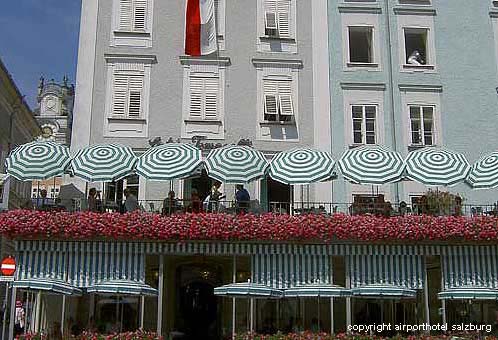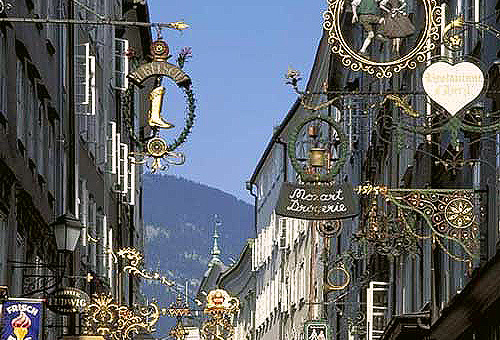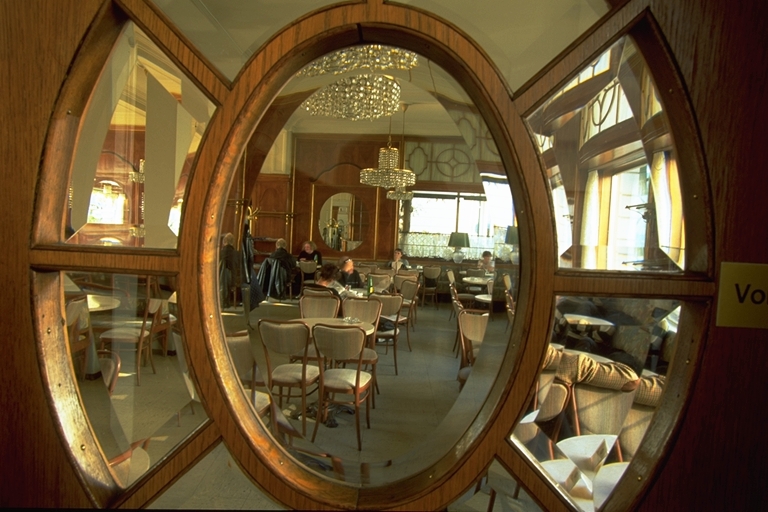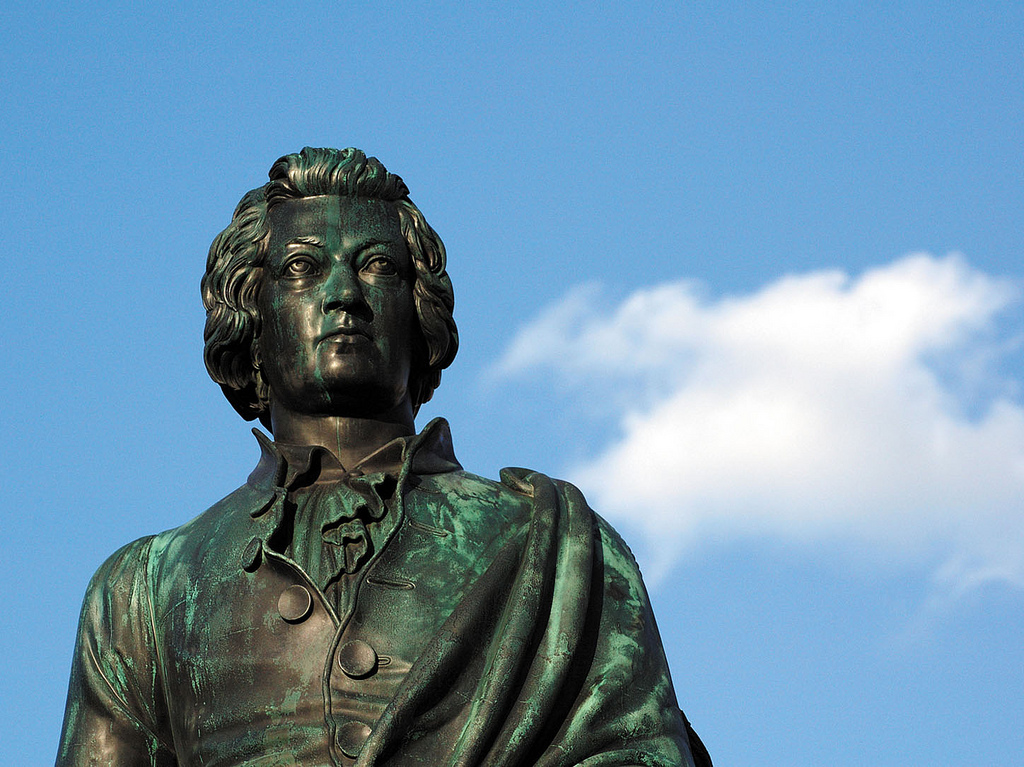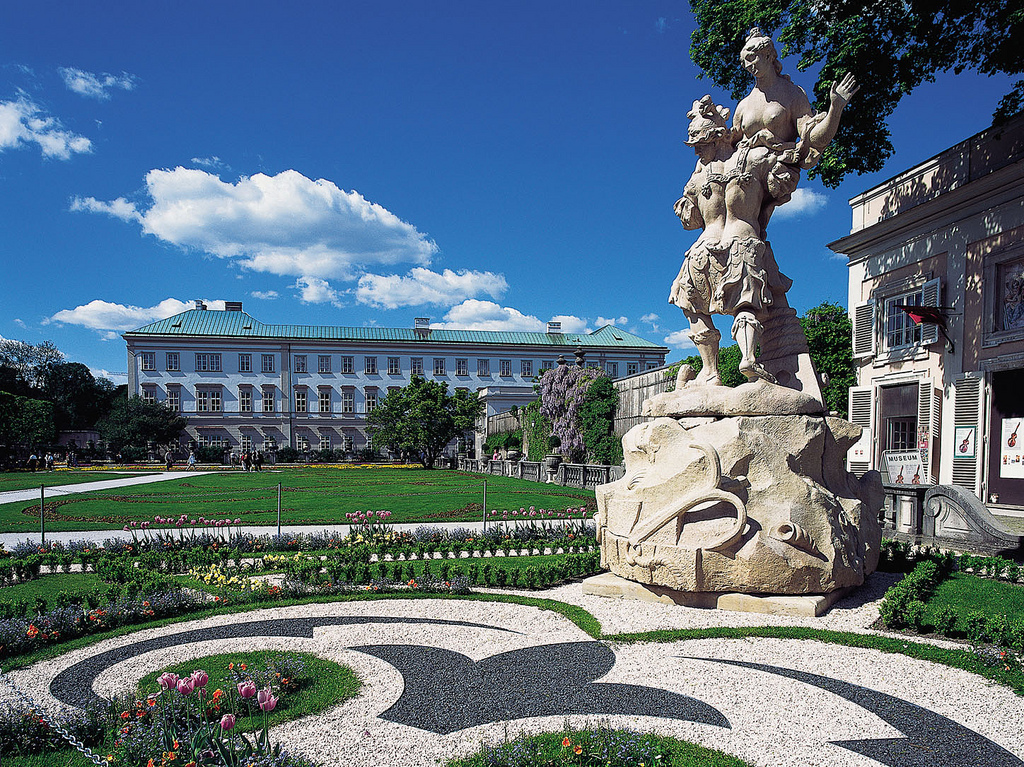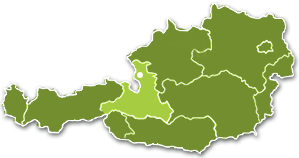Discover Salzburg
Experience the beauty and the monuments that make Salzburg such a special place. The best way to explore Salzburg is going for a walk through the historic city centre. Salzburg has so much to look at - we would like to present the main sights and monuments and some hints.
Cathedral
We start our tour at the Cathedral in the heart of the old town. The impressive monument represents the most monumental early Baroque edifice north of the Alps. Above the Cathedral stands the Fortress Hohensalzburg which is accessible via a funicular from Kapitelplatz. The fortress from the 16th century contains a torture chamber, two museums and towers with a magnificent view over Salzburg.
The Cathedral is surrounded by five interlinked squares that create a magnificent whole: Dom Square - with the statue of the Virgin Mary, glorification of the Immaculata (1771), 'Jedermann' is being performed there since 1920. Kapitel Square - a lively gathering place in summer with a horse-pond (1732). Mozart Square - with the Mozart monument, the New Residence building with the Carillon (1695) and with the 'Salzburg Museum' and the little church of St Michael. Residenz Square - with the Residenze Fountain (which is the largest baroque fountain north of the Alps) and the Residence on the western side of the square.
Residence
The Palace was built in 1120 and residence of the Prince-Archbishops. It contains 15 historic ceremonial rooms, splendidly decorated with rich stucco work and rare Brussels tapestries. In the Residenz Gallery you find many valuable paintings by European masters from the 16th to the 19th century. And finally the square 'Alter Markt' ( Old Market ) - the biggest non-ecclestical square in the old town, sourroundet by buildings from the 18th and 19th century. In the middle of the square you find the Floriani Fountain (1488) with the statue of St Florian, the patron of saint of firemen from 1734. Also remarkable are the 'Apothecary to the Prince-Archbishop's Court' going back to 1591 and the Tomaselli which is the oldest coffee house in Austria - founded in 1703. Many famous guests visited the café: the Mozart family, Michael Haydn, Carl Maria von Weber, Hugo von Hoffmansthal and the founder of the Salzburg Festival, Max Reinhardt. Enjoy the atmosphere and relax over coffee and cake for the next part of your sightseeing-tour. Not far from the Tomaselli - in Brodgasse - you can find the Cafe Fürst offering the handmade 'Original Mozartkugel', created in 1890.
St Peter
Only some steps from the Dom Place you find St Peter's District. In the heart of St Peter the lovely old cementry with its beautiful chapels, crosses and mysterious catacombs is situated. St Peter's Abbey and Benedictine Monastary were founded around the year 700 by St Rupert. The romanesque basilica (1130 - 1143) was beautifully refurnished in roccoco style (about 1775). The ornate interior is more impressive than the exterior with high marble pillars and a magnificent frescoed ceiling. The church houses imortant tombs: the graves of St Rupert and Michael Haydn. Next to the Church you find the famous restaurant 'Stiftskeller St. Peter' which is offering Austrian specialities.
The Franciscan Church
The Franciscan Church is a very beautiful and impressive church. Romanesque aisle from 1223, late Gothic chor flooded with light, some renaissance elements and baroque chapels around the main altar.
The Festival Halls
The Festival Halls - three theatres. The Smal Festival Hall, the Rocky Riding School ('Felsenreitschule'), the Large Festival Hall together with the Dom Square (which is about 400 metres away) form a unique festival complex.
Worth seeing is the ornamental Horse Pond (1695) at the Karajan Square. Walking towards the picturesque Getreidegasse you pass by the Burghers' Hospital and the gothic Church of St Blasius (1350). The Getreidegasse is Salzburg's picture-book street with lots of shops. The long narrow lane, once the main street, is flanked by tall houses which are all differently decorated and numerous gild emblems on it. The houses are deep with passages, often leading to charming courtyards. The most famous house is number 9, Mozart's birthplace. If you would like to taste typical Austrian distilled products we recommend 'Sporer' at Getreidegasse number 15. Here you can find all genuine regional specialties.
Linzergasse
Our tour continues over the bridge Staatsbrücke to the sights on the right bank of the Salzach river. The Linzergasse is a lovely pedestrian area with a lot of shops, restaurants, coffee houses and some architectural jewels: St Sebastian's Church and St Sebastian's Cementry with the mausoleum of Archbishop Wolf Dietrich (1617), the tomb of Paracelsus and the grave of the Mozart family.
Cafe Bazar
Next to the Staatsbrücke you find the Cafe Bazar - mostly frequented by musicians, a meeting place for actors, due to its proximity to the theaters. Especially during Festival season after rehearsals actors enjoy visiting the shady patio looking out onto the old town. The visitors' book is full of big names: composer Robert Stolz, Marlene Dietrich, King Edward VIII. and Louis Armstrong.
Makart Square
The Makart Square is just a few steps away from the Linzergasse. The impressive Holy Trinity Chuch (1694 -1702), the first architectural creation by baroque master Fischer von Erlach, dominates this square. House nr. 8 was the residence of the Mozart family and is now a museum. On the opposite side stands the City Theatre, a little bit further along the Schwarzstraße the delightful Marionette Theatre and the Mozarteum.
Mirabell Garden
Passing by the theatre at the right side you reach the Mirabell Garden with Mirabell Castle. The interior of the building is worth seeing: the monumental staircase decorated by sculptures and the Marble Hall which is nowadays known as one of the most beautiful wedding halls in the world. The park is largely unchanged with numerous fine statues of the greek mytholgie, an open air theatre 'Heckentheater', the Dwarf Garden, the Baroque Museum in parts of the orangerie and the Rosenhügel which provides a lovely view over the city.









